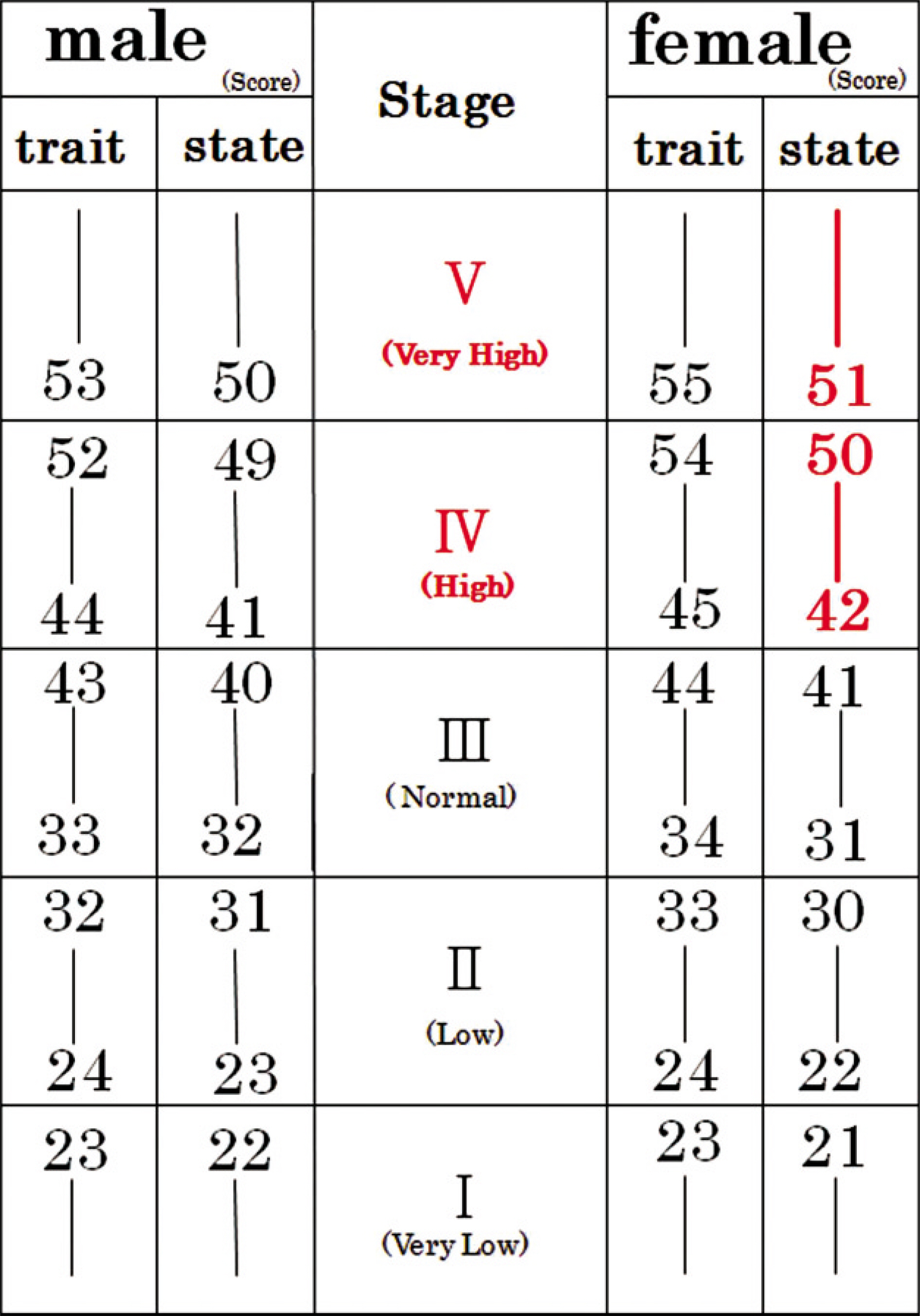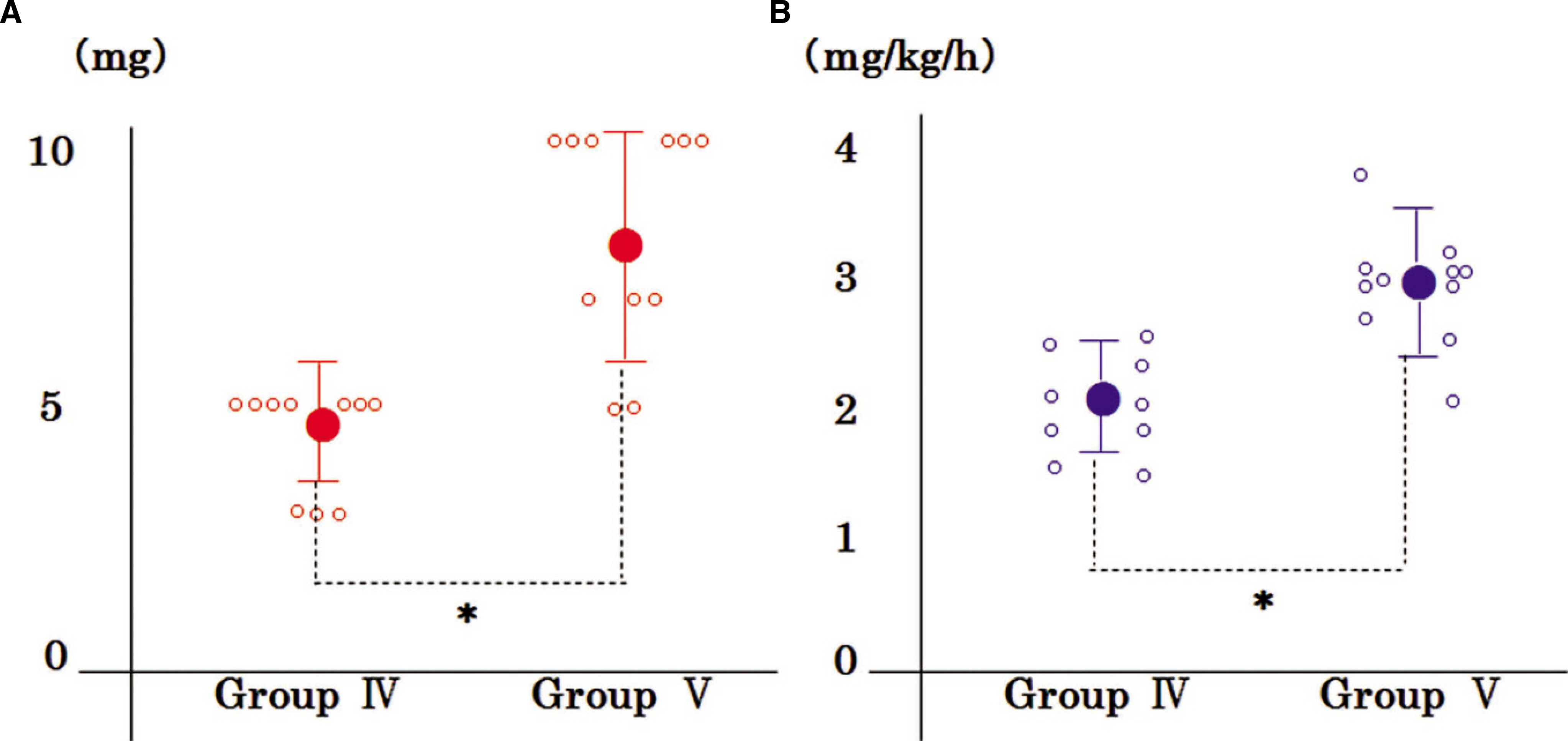J Korean Assoc Oral Maxillofac Surg.
2011 Jun;37(3):241-244. 10.5125/jkaoms.2011.37.3.241.
Sedative methods used during extraction of wisdom teeth in patients with a high level of dental anxiety
- Affiliations
-
- 1Department of Oral and Maxillofacial Surgery Faculty of Medicine, Fukuoka University, Fukuoka, Japan. miichan@minf.med.fukuoka-u.ac.jp
- KMID: 2189786
- DOI: http://doi.org/10.5125/jkaoms.2011.37.3.241
Abstract
- INTRODUCTION
Intravenous sedation is performed to ensure smooth and safe surgery. Dental anxiety is a reaction to an unknown danger. The Spielberger's state-trait anxiety inventory (STAI) can be used to simultaneously evaluate the levels of state and trait anxiety. State anxiety is defined as subjective feelings of nervousness. This study assessed the presurgical anxiety using STAI and performed intravenous sedation for patients whose level of state anxiety was > stage IV. Based on our clinical experience, it is believed that higher doses of sedatives are needed to induce the desired levels of sedation in patients with a high level of state anxiety.
OBJECTIVES
This study examined whether the sedative consumption of the patient with a high anxiety level increased.
PATIENTS AND METHODS
Patients with state anxiety scores of > or =51 were included in Group V, and those with state anxiety scores ranging from 42 to 50 were placed in Group IV. To induce sedation, intravenous access was established, and a bolus dose of 3.0 mg midazolam was administered intravenously. Sedation was maintained by administering a continuous infusion of propofol, which was aimed at achieving an Observer's Assessment of Alertness/Sedation scale of 10-12/20. In this study, midazolam was initially administered when the body movements appeared to occur or the blood pressure increased. This was followed by the administration of higher doses of propofol if low sedation was observed.
RESULTS
There were no significant differences in the patient demographics, duration of sedation, and doses of local anaesthetic agents between Groups IV and V. The midazolam dose and mean propofol dose needed to maintain comparable levels of sedation were significantly higher in Group V than in Group IV.
CONCLUSION
In female patients, whose level of preoperative state anxiety is more than Stage V of STAI, a large quantity of sedatives is needed for intravenous sedation.
MeSH Terms
Figure
Cited by 2 articles
-
Risk factor analysis of additional administration of sedative agent and patient dissatisfaction in intravenous conscious sedation using midazolam for third molar extraction
Dong-Whan Shin, Jin-Yong Cho, Yoon-Sic Han, Hye-Young Sim, Hee-Sun Kim, Da-Un Jung, Ho Lee
J Korean Assoc Oral Maxillofac Surg. 2017;43(4):229-238. doi: 10.5125/jkaoms.2017.43.4.229.Anxiety before dental surgery under local anesthesia: reducing the items on state anxiety in the State-Trait Anxiety Inventory-form X
Sayo Koga, Mika Seto, Shigeaki Moriyama, Toshihiro Kikuta
J Dent Anesth Pain Med. 2017;17(3):183-190. doi: 10.17245/jdapm.2017.17.3.183.
Reference
-
References
1. Spielberger CD, Gorusch RL, Lushene RE. Mannual for the State-Trait Anxiety Inventory. Palo Alto: Consulting Psychologist's Press;1970.2. Dionne RA, Yagiela JA, Cote ′CJ, Donaldson M, Edwards M, Greenblatt DJ, et al. Balancing efficacy and safty in the use of oral sedation in dental outpatients. J Am Dent Assoc. 2006; 137:502–13.3. Boker A, Brownell L, Donen N. The amsterdam preoperative anxiety and information scale provides a simple and reliable measure of preoperative anxiety. Can J Anaesth. 2002; 49:792–8.
Article4. Weinstein P, Shimono T, Domoto P, Wohlers K, Matsumura S, Ohmura M, et al. Dental fear in japan: Okayama prefecture school study of adolescents and adults. Anesth Prog. 1992; 39:215–20.5. Moerman N, van Dam FS, Muller MJ, Oosting H. The Amsterdam preoperative anxiety and information scale(APAIS). Anesth Analg. 1996; 82:445–51.6. Kim WS, Byeon GJ, Song BJ, Lee HJ. Availability of preoperative anxiety scale as a predictive factor for hemodynamic changes during induction of anesthesia. Korean J Anesthesiol. 2010; 58:328–33.
Article7. Osborn TM, Sandler NA. The effects of preoperative anxiety on intravenous sedation. Anesth Prog. 2004; 51:46–51.8. Liu J, Singh H, White PF. Electroencephalogram bispectral analysis predicts the depth of midazolam-induced sedation. Anesthesiology. 1996; 84:64–9.
Article9. Liu J, Singh H, White PF. Electroencephalographic bispectral index correlates with intraoperative recall and depth of propofol-induced sedation. Anesth Analg. 1997; 84:185–9.
Article
- Full Text Links
- Actions
-
Cited
- CITED
-
- Close
- Share
- Similar articles
-
- Wisdom teeth extraction in a patient with moyamoya disease
- Complications of impacted third molar extraction: retrospective study
- Target Controlled Conscious Sedation with Propofol and Remifentanil for the Extraction of Impacted Wisdom Teeth
- Relationship of dental anxiety with oral health behavior and dental caries experience in adolescents
- Kissing molars class III detected at a young age



